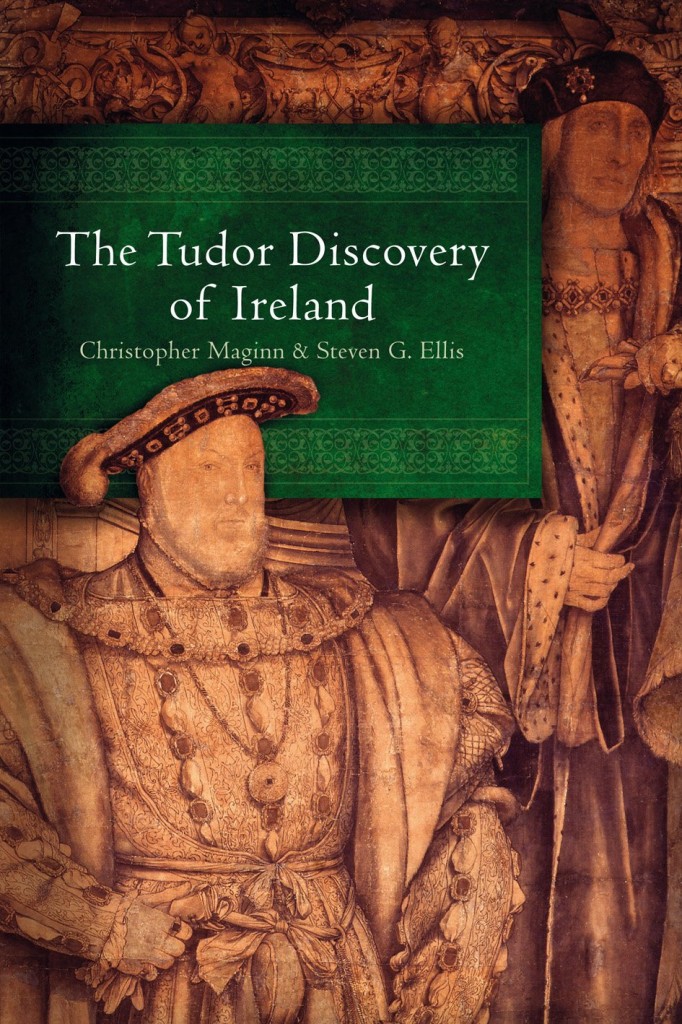Professor Christopher Maginn recently co-authored The Tudor Discovery of Ireland; a text that analyzes how the Tudor family–and by extension Elizabeth I’s councilor William Cecil–came to understand Ireland’s history, people, and geography. What’s even cooler? Maginn, and co-author Steven G. Ellis, based their analysis on a previously unknown manuscript that Maginn found. Let’s see what Professor Maginn has to say on his new book, co-authoring, and the process of writing …
The Tudor Discovery of Ireland grew out of the research which I had conducted for a book that I was writing on William Cecil, Lord Burghley, and Ireland in the Tudor period. While traveling through that famous Tudor statesman’s vast archive, I came across an undated and anonymous manuscript on Ireland hitherto overlooked by historians. I could tell by the handwriting and orthography that the manuscript belonged to the reign of Henry VIII. Because Cecil’s main period of service to the Tudors was later, in Elizabeth’s reign, I did not have any immediate use for the manuscript, apart from the fact that it showed that Cecil regularly sought out materials on Ireland (which was in those days a Tudor kingdom). Over the next few years, however, I began to transcribe and consider more deeply the contents of the manuscript. My work on William Cecil had already shown me the difficulties experienced by the Tudors, and the men who served them, in their efforts to rule a territory which they never visited and generally knew very little about. This long manuscript was evidently a kind of dossier intended at its most basic level to impart knowledge to those who read it and forced me to think more fundamentally about how Englishmen in positions of political power and influence came to learn about Ireland which was then becoming an important part of what was a composite Tudor state. I soon realised that the exploration of this abstract means of considering the Anglo-Irish relationship would require a book both to explore this document and reappraise aspects of Tudor Ireland in light of what I was now understanding as a process of knowledge acquisition: what I termed in the book ‘the Tudor discovery of Ireland’.
Steven Ellis holds the established Chair of History at the National University of Ireland, Galway. He supervised my doctoral thesis and over the years he and I have maintained a close professional relationship. Professor Ellis knows more about early political and economic Tudor source material pertaining to Ireland than most anyone in world. His technical expertise really is staggering and I learned a tremendous amount about the functioning of English administration from working with him.
I discovered the manuscript which forms the heart of The Tudor Discovery in 2009 at Hatfield House Library in Hertfordshire in England. I named the manuscript the ‘Hatfield Compendium’. I began to work on it in my spare time over the next few years during my frequent returns to Ireland. But a book on the subject had to wait until I finished my monograph on Cecil, which was ultimately published by Oxford as William Cecil, Ireland, and the Tudor state (2013). In 2013 I was awarded a Fordham Faculty Fellowship which allowed me a break from teaching and administration to concentrate on this fast-evolving project. I was also named the Irish American Cultural Institute Fellow in 2013 which allowed me to take up residence in the Centre for Irish Studies at NUIG for most of 2014. Another Fellowship at the Moore Institute at NUIG in summer 2014 allowed me to finish off the book.
This is my fourth book. I realise now, having written it, that I could not have written a book like this earlier in my career. For an academic, the book of the doctoral thesis is an obvious avenue for research. After that it can get tricky – how to identify a new and important topic for research can be a difficult thing. For me, having already published two monographs and then collaborated on a text-book, which was in essence a work of historical synthesis, afforded me the perspective to write a book which is unconventional in its structure and which offers what I hope is an entirely original and fresh approach to a subject of some antiquity.


